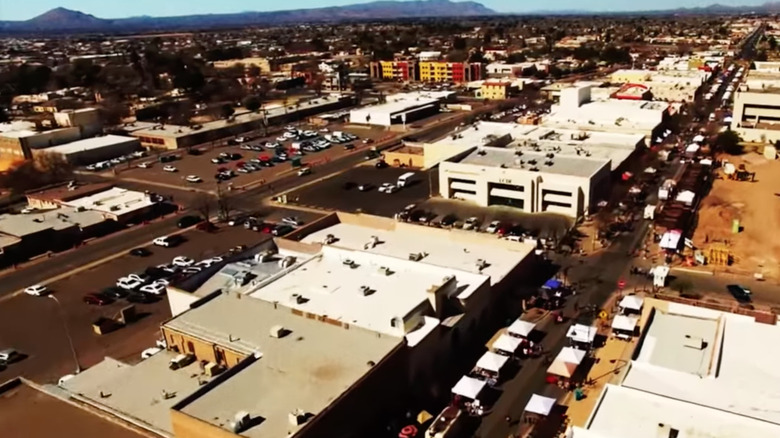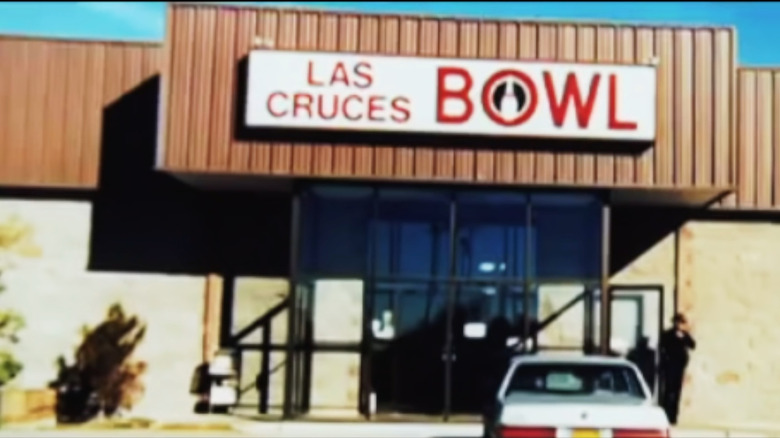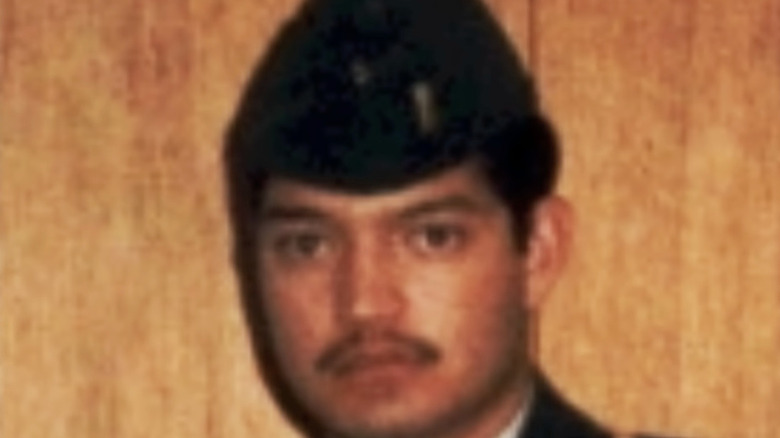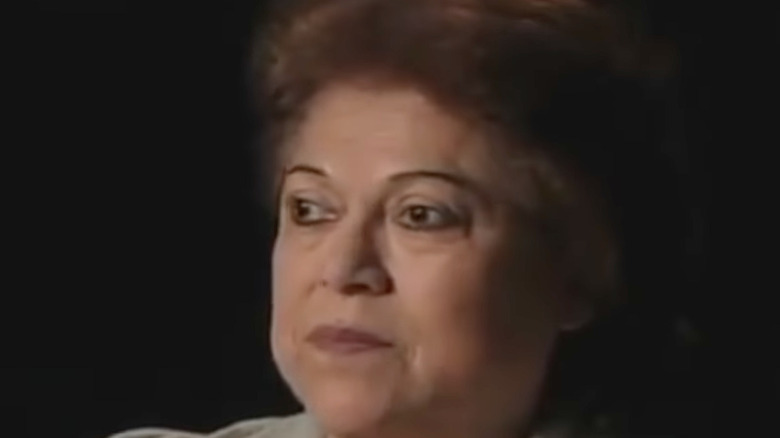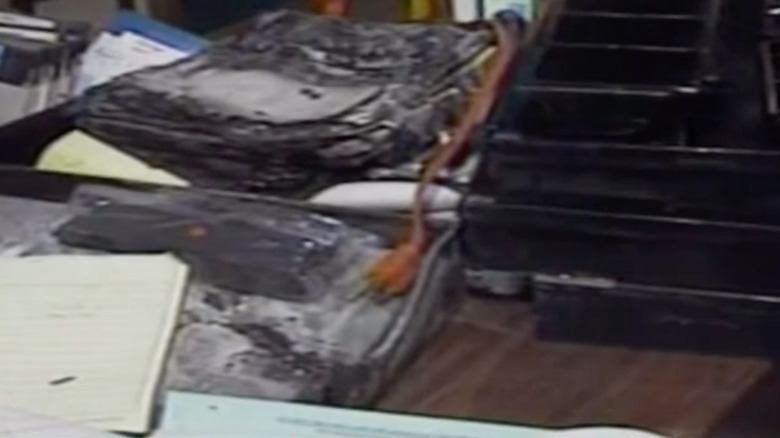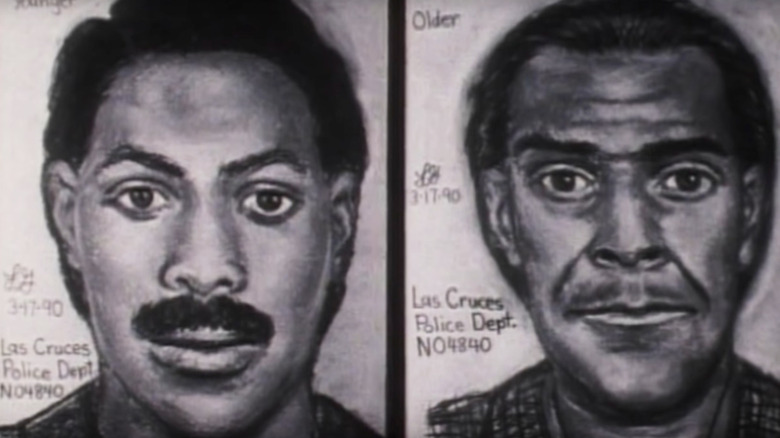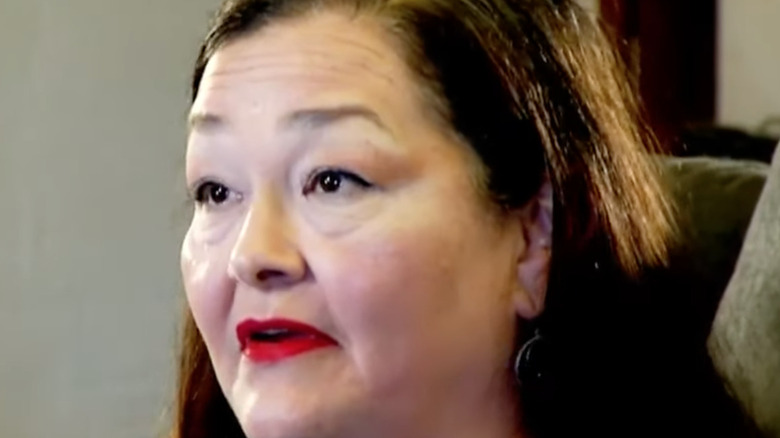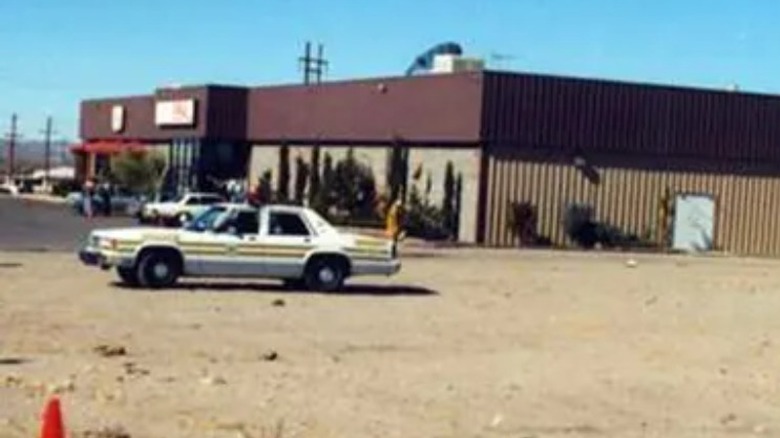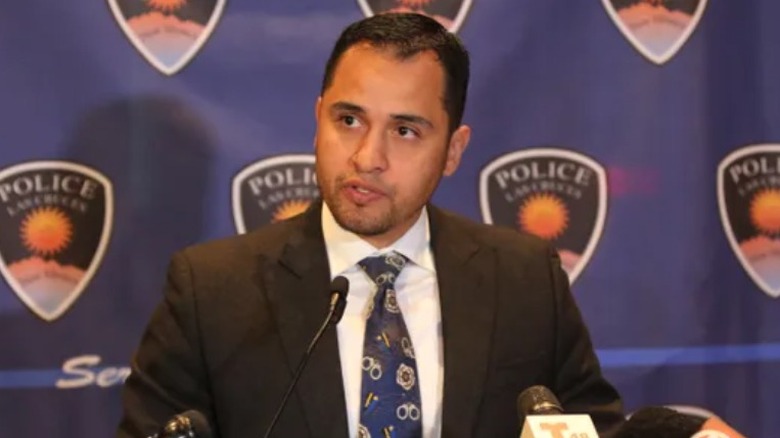Chilling Details From The Las Cruces Bowling Alley Massacre
It was a quiet Saturday morning on February 10, 1990, in the small college town of Las Cruces, New Mexico, when two gunmen entered the Las Cruces Bowl on East Amador Avenue. As the El Paso Times details, manager Stephanie Senac was getting ready to open up, and she was in the office with her daughter, Melissa Repass. Thirteen-year-old Amy Hauser was preparing the day care center while Ida Holguin, who worked as the bowling alley cook, was setting up for the day in the kitchen. Steve Teran, the pin mechanic, would arrive a short time later with his daughters, Valerie and Paula, aged 2 and 6. What happened next shocked Las Cruces, becoming one of the worst crimes in New Mexico history.
Police Capt. Fred Rubio was quoted by the El Paso Times later that day as saying "What we have here is nothing but a massacre. You're talking about the assassination of kids." Despite the fact that the crime occurred in broad daylight, the police only had guesses as to the gunmen's motive, and few clues. According to KRWG, charges have never been filed, and suspects have never been found. So what happened that morning? Here are the chilling details of the Las Cruces Bowling Alley Massacre.
Initial reports made it out to be just a robbery
As the gunmen stormed the bowling alley, locals paid little mind until emergency vehicles arrived. In fact, initial reports made it out to be simply a robbery. Neighbors said that their dogs began barking around 7:30 a.m., as reported by AP News, and were unaware of any gunfire. According the El Paso Times, a local man named Albert Garcia was across the street, and he said (of the shots), "It sounded like caps." The bowling alley was at an intersection, and East Amador was a busy street that the suspects would have had to cross, but no one noticed anything amiss until the sirens started blaring.
As AP news details, when the two gunmen entered through an unlocked door, according to Sgt. Phil George, "The owner's daughter had opened the safe and was counting the money when this all happened." They rounded all the occupants of the bowling alley into the office and shot them, ultimately killing four, including three children. According to Capt. Fred Rubio, there were two homicides in Las Cruces in all of 1989, compared to six by February 1990, and it appeared initially that robbery was the motive. The gunmen took around $5,000 dollars, as reported by the Statesboro Herald, which made it look like they were there for the money.
When robbery turned to mass murder
When 26-year-old mechanic Steve Teran arrived at the bowling alley, he was working his last few days – ironically, he had given his two weeks notice, reports the El Paso Times. Because he couldn't find child care for the day, he brought his daughters, Valerie Teran, age 2, and Paula Holguin, age 6 (no relation to Ida Holguin), in to work with him.
When Teran entered the bowling alley, the morning quickly became grisly. He and the girls were soon grabbed by the robbers and brought into the office with manager Stephanie Senac and her 12-year-old daughter Melissia Repass, Ida Holguin, and 13-year-old Amy Hauser. The gunmen then began shooting, upwards of 25 shots, hitting each victim multiple times at point blank range. They then set the office on fire and ran. Teran and his daughter, Paula, were dead at the scene. Valerie died within moments of being admitted to the hospital shortly thereafter. Senac survived for nine years but sadly died in 1999 due to complications from her old injuries, notes the Toronto Sun.
Junior league games for kids were scheduled to start at 9 a.m., as reported by AP News, so the death toll could easily have been far worse. Police Capt. Fred Rubio said, "If there had been any more people, I'm sure they would have been shot." He later went on to say that the perpetrators wanted to leave no witnesses, as reported by the New York Times.
After opening fire, the suspects made their exit. Mark Myers of the Las Cruces Police Department told the Statesboro Herald that he believed the massacre was premeditated: "They lit the office on fire. That's a clear indication they were thinking about destroying evidence they had left behind. They weren't going to leave any witnesses, no matter how young."
Survivor Ida Holguin suffered life-changing injuries
Bowling alley cook Ida Holguin didn't immediately know something was wrong. According to her, when the two suspects entered at about 8:20 a.m., little over half an hour before the bowling alley opened, she initially assumed they were part of their maid service, as per El Paso Times.
Holguin was forced from the kitchen at gunpoint and marched to Stephanie Senac's office, where Senac, her daughter, and her daughter's friend were getting ready for the day's business, as per the Toronto Sun. The gunmen ordered them to the floor, where they opened fire on the victims.
While Holguin sustained serious wounds, she was alive when paramedics arrived. According to the Las Cruces Sun News, she spent six months in the hospital with a long road of painful rehabilitation head of her. As told by her husband Raymond Holguin, the severe head trauma forced her to relearn how to do even the most basic tasks. He said, "She'd walk up to a water fountain, she couldn't turn it on. She couldn't walk up steps because her equilibrium was messed up. It took years just to get to the point where she's at now."
Melissia Repass called 911 with a bullet in her head
Melissia Repass' bravery in the face of the carnage was remarkable, although what she described to the 911 operator was chilling. Somehow still conscious, crying and bleeding out from multiple gunshot wounds, she called 911.
One of the first things the 12-year old said to the 911 operator, shortly after they were connected, was, "All of us were hurt. I think I'm the only one conscious ... They shot me five times" (via the Cruces Sun News). The terror of the morning was clear in her voice as she described the scene, uttering words no child should have to say: "Oh god, I'm gonna die I know I am ... The bullet's in my head."
As the fire in the office continued to burn and get closer to her, Repass tried to describe the situation to the operator, all the while begging for help and surrounded by the other bodies. Surprisingly lucid, the young girl was able to direct officers to her location for rescue. Luckily, according to KOB, Repass survived the incident.
The crime scene was a mess
The intervention of the fire department and other first responders ruined most, if not all, of the crime scene evidence.
Dan Trujilo of the Las Cruces Police Department said, "It was never an easy case to begin with. If you remember the facts of the case, there were several people shot and then the suspects started a fire in the small office where the incident happened. So Las Cruces Fire had to go in there and put out the fire first," as per KOB. Because forensic science was not as advanced in 1990, little thought was given to meticulous preservation of the office and surrounding area.
The fire fighters had to come in to put out the fire, the bodies of the dead and wounded had to be dragged out, and first responders had to come through the bowling alley and office to do their jobs. It's believed that in using fire extinguishers and hoses to put out the blaze, the Las Cruces Fire Department either contaminated or destroyed evidence at the scene.
Despite the imperfect crime scene and the limits of forensics at the time, the Las Cruces Police Department tried to investigate as thoroughly as possible. Though their efforts at the time didn't turn up much usable evidence, new procedures and techniques have kept the investigation from going completely cold. Det. Amador Martinez was quoted on the subject in 2015, saying, "There's always an ever-changing shift in technology. So we're trying to utilize those the best we can" (via KFOXTV).
Police might have let the suspects go
Steve Senac, brother of manager Stephanie Senac, had worked the night before but was off that day. He returned briefly the morning of the murders before the bowling alley opened to retrieve his backpack. Once news of the crime broke he reported he'd seen two men approaching the bowling alley that morning as he was leaving. As noted in American Crime Journal, Senac encountered two men heading towards the Las Cruces Bowl as he was on his way out, and his description of the two Hispanic males helped form the police composite.
Later in the day the police brought Senac to a van they'd stopped at one of the roadblocks, with men who might have been the suspects from the massacre (and, incidentally, were also in possession of lots of cash). They asked him to verify whether any of the men inside were the same men he'd seen earlier, but he wasn't able to provide a positive ID, and without anything conclusive the police had no choice but to let the two men go.
While the Las Cruces Police Department turned out in force, with help from Customs and the Border Patrol, they were unsuccessful. As reported by AP News, despite the roadblocks and the police department's best efforts, no arrests were made.
The survivors and families were left without answers
Because the case has never progressed past the initial investigation, the survivors and family members have been unable to find any sort of closure or peace.
Melissia Repass and Ida Holguin don't speak of the massacre. According Raymond Holguin, Ida's husband, speaking to the Las Cruces Sun News, she would not return to the crime scene.
The family members of those who died remain frustrated about the lack of leads, and lack of closure. Steve Teran's younger brother, Anthony Teran, often speaks on the anniversary of the shooting. "We have pictures on the walls –- every day I see them and it doesn't go away. Every conversation always comes around to something my brother did or said," he said to the Las Cruces Bulletin, haunted by his memories.
Mark Woods, brother to Amy Houser, was quoted as saying, "No one's come to justice for this. We haven't had any peace at all" (via KTSM). Audrey Martinez-Teran, wife of Steve Teran, had a similar sentiment: "You wait and wait and wait ... We've gotten to the point where we just don't get any answers" (via the Statesboro Herald).
The robbery may have been connected to the owner of the bowling alley
As noted by American Crime Journal, bowling alley owner, Ron Senac, had a dubious reputation, with alleged ties to active cartels in the region. Investigators also learned that the owner's younger son, R.J. Senac, had a drug habit. Anthony Teran, Steve Teran's brother, spoke to the Silver City Daily Press in 2014, seeming to acknowledge the Senac's questionable business relationships: "You know, my brother and I used to go to that bowling alley. We knew Ron Senac, the owner, and we noticed he had friends and buddies often hanging out there who seemed strange to us."
While these facts were not enough to cast suspicion on the Senac family, when the Las Cruces PD investigated both men they were unable to turn up anything solid. Despite public suspicion, according to KVIA, police also denied any connection to a scene from a month earlier, in which gas station attendant Salvador Lozando was executed with a single bullet to the head, and his gas station robbed, reports the El Paso Times.
Was robbery done by professionals?
Along with other facts that pointed to the massacre being something other than a robbery gone wrong, according to American Crime Journal, Ida Holguin later reported that she'd seen the men before. They had been in the bowling alley prior to the massacre, perhaps studying the business hours or employees. She said the men "... were looking for something else before they went to the safe."
According to Det. Chuck Franco, speaking to the El Paso Times, the type of weapon used and the execution-style shots pointed towards the job being done by professionals. The Times also reported that the Las Cruces PD looked into the rumor that the killing may have been carried out to send a message to the Senac family.
The El Paso Times reported (via True Crime Edition) that Ron Senac opened the bowling alley a mere six days after the massacre, with a picture of him in the paper smiling in the cleaned-up office where the murders occurred.
The case remains unsolved
Police believe that solving the case will take people coming forward and innovations in forensics, although they note that it is still an open case and are still pursuing leads.
According to a report by the local affiliate, CBS4, the police still think they can crack the case, and they are hopeful that modern technology, most of which was unavailable in 1990, will help solve the crime. Public Information Officer Dan Trujillo said (via the NMSU Round Up) the police believe, "There is still somebody out there who knows what happened."
According to a report in the AP, the 30th anniversary in 2020 of the heinous crime has stirred up new interest and generated new leads, so there is still hope for the survivors and the families of the victims. As Det. Amador Martinez said, "Some of the people who have been suspected of this crime in the past, their names have popped up again. And even though they've been looked into, I've decided we're going to do it all over again." In addition, the reward has been upped to $30,000.
As of 2021, Martinez is actively pursuing leads as they come in. "We just have to find that right piece that will fit into that mold, that will fit into this new DNA technology, this new genealogy tree that we can use. We just have to find that piece," he said (via the El Paso Times).
